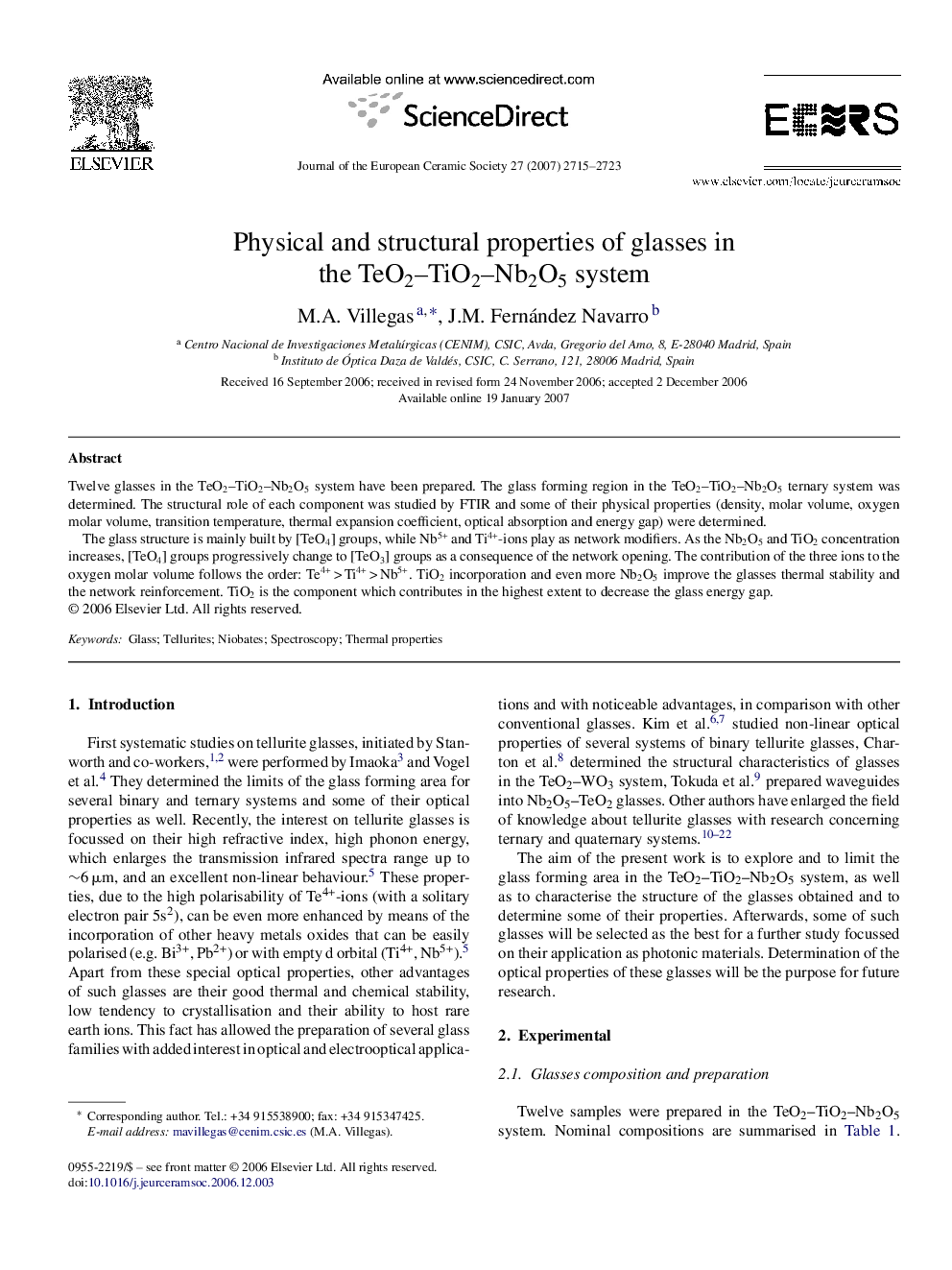| Article ID | Journal | Published Year | Pages | File Type |
|---|---|---|---|---|
| 1478468 | Journal of the European Ceramic Society | 2007 | 9 Pages |
Twelve glasses in the TeO2–TiO2–Nb2O5 system have been prepared. The glass forming region in the TeO2–TiO2–Nb2O5 ternary system was determined. The structural role of each component was studied by FTIR and some of their physical properties (density, molar volume, oxygen molar volume, transition temperature, thermal expansion coefficient, optical absorption and energy gap) were determined.The glass structure is mainly built by [TeO4] groups, while Nb5+ and Ti4+-ions play as network modifiers. As the Nb2O5 and TiO2 concentration increases, [TeO4] groups progressively change to [TeO3] groups as a consequence of the network opening. The contribution of the three ions to the oxygen molar volume follows the order: Te4+ > Ti4+ > Nb5+. TiO2 incorporation and even more Nb2O5 improve the glasses thermal stability and the network reinforcement. TiO2 is the component which contributes in the highest extent to decrease the glass energy gap.
